-
1
Everything has on onset!
The Life Cycle of Braskem products can start on fossil or renewable basis.Fossil: It all starts in oil and gas extraction wells, where the raw materials from the environment are extracted and then transported to the refining units. In the units, oil and natural gas take the form of several products known to all, such as gasoline, kerosene, and naphtha - essential raw material for Braskem products.
Renewable: This cycle begins in the sugar cane plantation. The sugar cane is processed in plants and transformed into alcohol (ethanol), which is sent to the Braskem plant .
Brine: Braskem also has a salt extraction unit, where the brine is extracted and sent to the beneficiation units of this raw material.
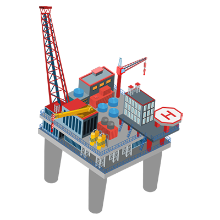
Benefits / Impacts
The extraction stage of raw materials is one of the most sensitive stages of the life cycle. The production chain has direct contact with the environment. Most of the environmental impacts of this stage are related to the depletion of non-renewable resources, emissions and water use. Impacts also represent potential benefits.
-
2
Benefiting Raw Material
The processing of raw materials is fundamental to offer quality products to the consumerFossil: Naphtha and natural gas arrive at the Braskem plant, where they receive a more refined treatment. From this process, Ethylene and Propene are produced, fundamental raw materials for the second step: polymerization, which is also controlled by Braskem. In this stage, the units receive Ethene to produce Polyethylene or Propene to become Polypropylene. In addition to Ethene and Propene, Braskem produces a number of chemicals, such as solvents.
Renewable: In Braskem's plants, ethanol is dehydrated, giving rise to Ethene. From this, the renewable ethylene goes through the same process as the fossil Ethene to produce Polyethylene.
Brine: The raw material gets to Braskem's units along with Ethylene, which will give life to Vinyl Polychloride, PVC, a material used in pipes, among other applications. In addition to PVC, these units produce other chemicals such as Sodium Hypochlorite and Hydrochloric Acid.
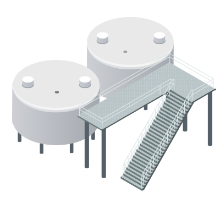
Benefits / Impacts
The step of processing raw materials is essential to make them marketable products. The impacts of this stage are usually related to high energy consumption and atmospheric emissions.
-
3
Transporting products
Logistic Systems to meet the Value ChainIn a globalized world, logistics systems are fundamental. The productive stages usually occur in different geographic locations; hence they require a means of transportation so that materials are moved from one point to another. The most common transport modes are: road, rail, waterway, maritime, air and pipeline. The efficiency of the modal depends on the type of product, distance and quantity transported, so it becomes a specific solution for each case.
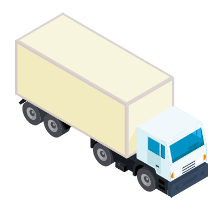
Benefits / Impacts
The environmental impact of land transport has a distinctive impact on land use and atmospheric emissions from the use of energy / fuel combustion. Water, maritime and air transport are intensive in emissions from the use of energy / fuel combustion. Finally, the pipeline transportation has an impact on emissions resulting from possible leaking emissions and system losses.
-
4
Transformation
The moment when Raw Material becomes Final ProductIn order to transform the resins that Braskem produces, there are several methods of modifying a polymer. Generally, they all involve the heating and pressure of the resin on a mold or matrix that will give rise to the part.
The plastics transformation stage has a smaller scale than the preceding steps. Nevertheless, the related impacts can be significant mainly due to the energy consumption of the transformation industries. More efficient polymers, for example, reduce the amount of energy consumed and increase the productivity of transformers, and this improves performance not only from a process point of view, but also from the environmental one.
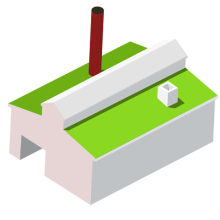
Benefits / Impacts
The transformation of plastic is an intensive process in raw material and energy. Therefore, the management of energy consumption and the reduction of losses are fundamental to reduce the environmental impact in this stage. In addition, transformation is the time when the product is developed. Considering the life-cycle concept in design is essential to enable recycling and facilitates product durability, for example.
-
5
At last: At Consumer's hand!
The products in practiceThe time has come for the plastic to show what it is here for, and at this stage it demonstrates its greatest benefits, such as low density and electrical conductivity, as well as flexibility and durability, which explain its efficiency in various applications.
In the case of basic chemicals, they can be transformed into other plastics, paints, pesticides among others.
Examples:
Automotive: It decreases vehicle weight by reducing fuel consumption. It also reduces water losses.
Sanitation: The material facilitates and reduces the need for maintenance. It also reduces the price of the part, water losses and helps to universalize basic sanitation.
Packaging: It prevents waste of food.
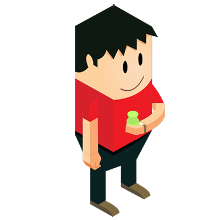
Benefits / Impacts
In the use stage, the products have a positive impact, that is, they show benefits. The plastic reduces food waste in the form of packaging, as well as the mass of cars and airplanes, also decreasing the energy needed to move them. Inks preserve surfaces and reduce the need for maintenance, for example.
-
6
The cycle starts over
Liability shared by the end of lifeSociety and businesses have a responsibility to manage the solid waste they produce and the products they consume. Within our units, the generation of waste is controlled by an ecoindicator. For the market, with initiatives from Wecycle, we also seek to incorporate Braskem's business as part of the solution for the mechanical recycling of plastic.
There are today 4 types of residues treatment:
Chemical Recycling: When plastic becomes a basic chemical, such as naphtha;
Energetic Recycling: When the residue is burned in a controlled environment (such as a boiler or furnace) to generate energy;
Mechanic Recycling: When the residue returns to the processing industry and is converted into a new product;
Landfill: When the residue goes to landfills, the plastic remains inert for many years in this case.
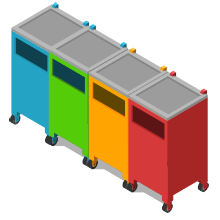
Benefits / Impacts
Disposal can have an environmental impact or benefit, depending on how the disposal takes place. If the disposal is correct, the plastic should be led, via reverse logistics, to various applications. In the case of mechanical recycling, the recycled plastic prevents virgin raw material from being extracted, for example. When the plastic goes to landfills, it remains inert in the soil for a long time, so this is not the destination that most value the plastic waste. When the disposal is incorrect, the plastic goes to irregular disposal points, where the rains can take it to the rivers and oceans.
Braskem
-
English
- Languages
- Portuguese
- English
- Spanish
- Worldwide Sites
- United States
- Mexico
- Europe


